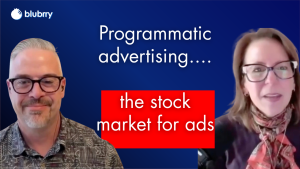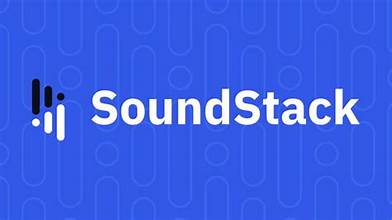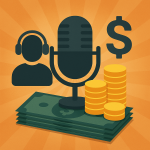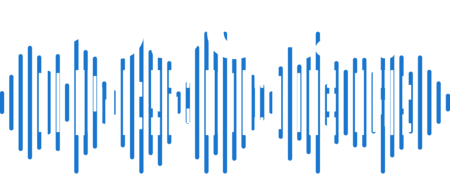Editor’s note: This conversation was recorded as Blubrry CEO Todd Cochrane’s final Podcast Insider Special Video Edition before his unexpected passing on Sept. 8, 2025. We share it here to honor his legacy, his commitment to educating podcasters, and his dedication to this community.
 Programmatic advertising has become one of the most discussed — and sometimes misunderstood — topics in podcast monetization. In this special episode of Podcast Insider, Blubrry CEO Todd Cochrane sat down with two longtime industry colleagues, Rocky Thomas, Chief Strategy Officer at SoundStack, and Matt Kellogg, who leads business development and partnerships at the company. Together, they pulled back the curtain on how programmatic works, what it means for podcasters, and where the opportunities lie.
Programmatic advertising has become one of the most discussed — and sometimes misunderstood — topics in podcast monetization. In this special episode of Podcast Insider, Blubrry CEO Todd Cochrane sat down with two longtime industry colleagues, Rocky Thomas, Chief Strategy Officer at SoundStack, and Matt Kellogg, who leads business development and partnerships at the company. Together, they pulled back the curtain on how programmatic works, what it means for podcasters, and where the opportunities lie.
What Programmatic Really Means
As Todd framed the discussion, many podcasters want to know: what exactly is programmatic advertising?
Rocky compared it to the stock market. Podcasters make their ad inventory — time within their shows — available in an open marketplace. Advertisers then bid in real time for the chance to reach specific audiences, shows, or demographics. This creates a dynamic system where the ad that plays in a California podcast listener’s earbuds might be different from the one heard in Florida at the very same moment.
“It’s all about supply and demand,” Rocky explained. “When there’s more demand, CPMs rise. When demand dips, they fall. The beauty of programmatic is that it brings efficiency to an industry where wasted impressions were once the norm.”
CPMs, Bidding, and Realities of Revenue
Matt emphasized that CPMs — the cost advertisers pay per thousand impressions — can swing widely, anywhere from $2 to $15 or more. “Advertisers want to buy as cheaply as they can. That’s just the nature of the beast,” he said.
But as shows grow, consistency and demand-side interest often lead to stronger bidding and higher rates. For podcasters, the takeaway is clear: consistency in publishing builds trust not only with audiences but with advertisers, too.
Todd added his perspective as both a podcaster and a hosting company leader. “I remind creators, you’re not going to get a 100% fill. But even a $2 CPM is better than zero.”
Programmatic as a Safety Net, Not the Goal
 Rocky and Matt emphasized that direct relationships with advertisers should remain a podcaster’s bread and butter. Programmatic, they said, should be viewed as supplemental revenue — a way to optimize unused inventory, or to generate income while building toward stronger, direct sponsorship deals.
Rocky and Matt emphasized that direct relationships with advertisers should remain a podcaster’s bread and butter. Programmatic, they said, should be viewed as supplemental revenue — a way to optimize unused inventory, or to generate income while building toward stronger, direct sponsorship deals.
Rocky explained: “If you’ve got a focused show and community, that’s where the real money is — direct advertisers who want to reach your audience. Programmatic is the extra. It’s the yield optimization layer that fills in the gaps.”
Todd echoed this, drawing parallels to his own background in radio. “Local direct advertising paid the bills, while national programmatic added the extras. The same thinking applies to podcasting.”
Quality, Consistency, and Listener Experience
One worry podcasters often raise is whether programmatic leads to low-quality, irrelevant, or “remnant” ads. But Rocky reassured creators: “Unlike the early days of digital display ads, audio has higher creative barriers to entry. That means fewer bad ads slip through. And with tools like blacklisting and category controls, podcasters have more say than ever.”
Todd also cautioned podcasters against overloading their episodes with ad slots. “I’ve stopped listening to shows that sound like radio, with five pre-rolls and breaks every few minutes. For an hour show, one or two pre-rolls and a couple of mid-rolls are plenty. Respect your listeners, and the revenue will balance out.”
Looking Ahead
 The conversation underscored how complex programmatic systems are — and how much potential they still hold. Matt noted that programmatic fill rates vary based on content quality, consistency, and advertiser demand, with some shows reaching up to 100%.
The conversation underscored how complex programmatic systems are — and how much potential they still hold. Matt noted that programmatic fill rates vary based on content quality, consistency, and advertiser demand, with some shows reaching up to 100%.
Rocky added that greater demand, especially from big brands, is emerging. “As more advertisers recognize the power of podcasting, we’re seeing healthier competition, less listener burnout, and better prices for inventory.”
Todd closed the discussion by urging podcasters to stay consistent, strategic, and open to new monetization tools — while never forgetting the importance of building community and trust.
Share your photos and write your memories of Todd on our Facebook wall!





